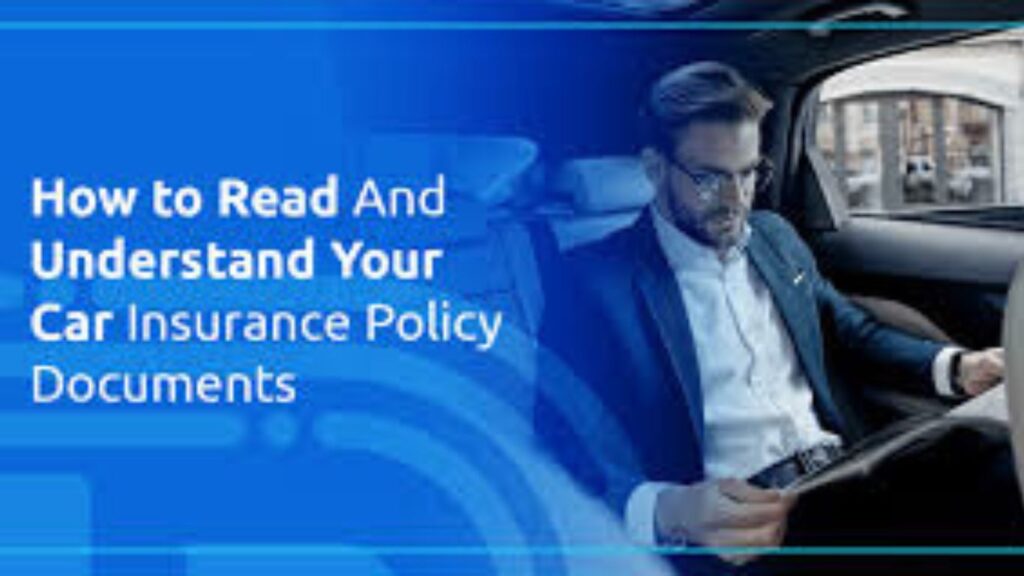The Basics of Car Insurance: What Every Driver Should Know. Vehicle protection is an essential part of vehicle possession in the US, giving monetary security against unanticipated occasions like mishaps, burglaries, and risk claims. In any case, exploring the universe of vehicle insurance can be perplexing because of different inclusion choices, contract terms, and legitimate necessities. The Basics of Car Insurance: What Every Driver Should Know. This extensive aide intends to demystify the rudiments of vehicle protection, engaging drivers to settle on informed choices and guarantee they have satisfactory inclusion for their requirements.
Significance of Vehicle Protection
Vehicle protection fills a few basic needs that benefit the two drivers and society all in all:
- Financial Protection: It safeguards you from significant monetary misfortunes coming about because of fender benders, vehicle harm, or wounds to yourself or others.
- Legal Requirement: In many states, drivers are legitimately expected to convey a base measure of vehicle protection to work a vehicle on open streets.
- Peace of Mind: Realizing you experience protection and inclusion gives you harmony of psyche that you’re ready for surprising occasions out and about.
Kinds of Vehicle Protection Inclusion
Vehicle insurance contracts ordinarily comprise a few sorts of inclusion, each filling a particular need:
- Liability Coverage: This covers real injury and property harm that you might cause to others in a mishap where you are to blame. It incorporates:
- Real Injury Liability: Covers clinical costs, lost compensation, and lawful charges of the other party.
- Property Harm Liability: Covers fix or trade costs for vehicles or property harmed in a mishap you caused.
- Collision Coverage: Pays for fixes to your vehicle after a crash with another vehicle or item, paying little mind to blame.
- Comprehensive Coverage: Shields your vehicle from non-impact occurrences like burglary, defacement, fire, and catastrophic events.
- Uninsured/Underinsured Driver Coverage: This covers clinical costs and vehicle harm on the off chance that you’re in a mishap with an adequate driver protection inclusion.
- Personal Injury Security (PIP) or Clinical Installments Coverage: Pays for clinical costs for yourself as well as your travelers, paying little heed to blame.
- Additional Inclusion Options: Incorporate rental repayment, emergency aides, hole protection, and that’s just the beginning.
Factors Influencing Vehicle Insurance Payments
A few variables impact the expense of vehicle insurance installments:
- Driving Record: A perfect driving record without any mishaps or petty criminal offenses commonly prompts lower expenses. Then again, a background marked by mishaps or tickets might increment rates.
- Age and Experience: More youthful and less experienced drivers by and large compensation higher expenses because of higher gamble profiles. Rates frequently decline with age and more long stretches of driving experience.
- Location: Metropolitan regions with higher gridlock or crime percentages might have higher expenses contrasted with rustic regions.
- Vehicle Type: The make, model, age, and security highlights of your vehicle can affect protection rates. More up-to-date vehicles with cutting-edge security highlights might fit the bill for lower charges.
- Credit Score: In certain states, the record as a consumer can influence insurance payments. Keeping a decent FICO rating might bring down your rates.
- Coverage and Deductibles: Higher inclusion cutoff points and lower deductibles regularly result in higher charges. Changing these factors can assist with overseeing protection costs.
- Annual Mileage: Drivers with lower yearly mileage might meet all requirements for lower charges since they have fewer chances of being engaged in mishaps.
- Marital Status: Wedded people might get lower expenses contrasted with single drivers, as they are genuinely more averse to taking part in the dangerous driving ways of behaving.

Understanding Arrangement Cutoff Points and Deductibles
While choosing vehicle insurance inclusion, it’s fundamental to comprehend contract cutoff points and deductibles:
- Strategy Limits: The most extreme sum your backup plan will pay for a covered case. Higher cutoff points give greater inclusion however may prompt higher expenses.
- Deductibles: The sum you should pay personally before your protection inclusion kicks in. Picking a higher deductible can bring down charges however expects you to pay more forthrightly in the event of a case.
Looking for Vehicle Protection
To track down the right vehicle insurance contract at the best cost, follow these means:
- Assess Your Inclusion Needs: Decide the sorts and measures of inclusion you want to give your vehicle, driving propensities, and monetary circumstances.
- Research Protection Companies: Analyze legitimate insurance agencies known for good client support, claims to deal with, and monetary dependability.
- Get Various Quotes: Get statements from no less than three unique insurance agencies to think about rates, inclusion choices, and limits.
- Consider Discounts: Ask about accessible limits, for example, safe driver limits, multi-strategy limits (packaging vehicle insurance with different contracts), and great understudy endlessly limits for vehicle security highlights.
- Review Strategy Details: Painstakingly read each statement to comprehend inclusion limits, deductibles, rejections, and extra advantages.
- Evaluate Client Service: Exploration of client audits and appraisals to survey the safety net provider’s standing for client care and claims fulfillment.
- Review Regularly: Occasionally audit your vehicle insurance contract to guarantee it addresses. Your issues and stays serious concerning inclusion and cost.
End
Vehicle protection is a crucial part of a capable vehicle proprietorship, giving monetary security and inner serenity out and about. The Basics of Car Insurance: What Every Driver Should Know, By understanding the fundamentals of vehicle insurance, including inclusion choices, factors influencing expenses. How By searching for all that contract, drivers can pursue informed choices to safeguard themselves and their vehicles. Make sure to survey your inclusion needs. Think about statements from various safety net providers, and audit strategy subtleties cautiously to guarantee. You have sufficient assurance if there should be an occurrence of mishaps or unexpected occasions. The Basics of Car Insurance: What Every Driver Should Know. With the right information and proactive methodology. You can explore the vehicle insurance market unhesitatingly and secure a contract that addresses your issues at a serious cost.
